2014 Chevrolet Malibu: First Drive

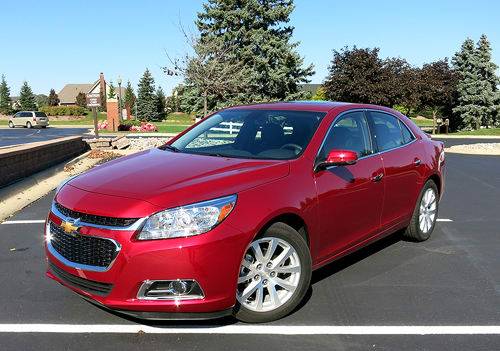
Chevrolet’s midsized Malibu has had a problem during the past year. Sales of the latest model, updated for the 2013 model year, have not been as good as the company had expected. In a string of post-bankruptcy hits like the Cruze compact and Equinox crossover, the redesigned Malibu has stood out as a miss, due to some competitiveness issues in fuel economy and interior room. But this is the new General Motors, where agility and speed are prized as much as profitability, and with a push from upper management we now have a mildly revised Malibu for 2014.
For 2014, Chevrolet’s made some updates to styling, simplified powertrain options, improved fuel economy, bumped up usable rear-seat volume a tad and added some interesting features.
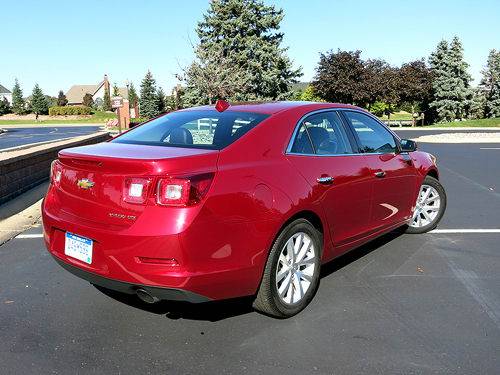
From a styling standpoint, you might be hard pressed to tell the difference from the 2013 to 2014 Malibu. The front end is a bit more aggressive, with a new grille and headlights that bring the car more in line with the Chevrolet family look now seen on the Impala and Traverse. The rest of the bodywork is unchanged from the 2013 update introduced just 18 months ago, but is still fresh and distinctive.
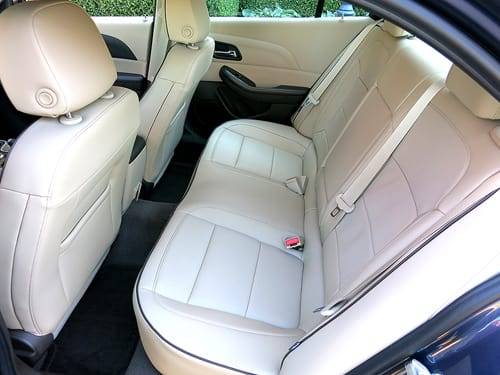
Inside, there are two major changes. The first comes in the backseat, where Chevrolet claims to have increased knee room by 1.25 inches thanks to newly sculpted front seatbacks and a revised rear seat cushion. Headroom is no longer at a premium in the back seat, and while there is indeed now decent knee room, the Malibu still suffers from a distinct lack of legroom. That problem cannot be easily solved without a change in the vehicle’s wheelbase length.
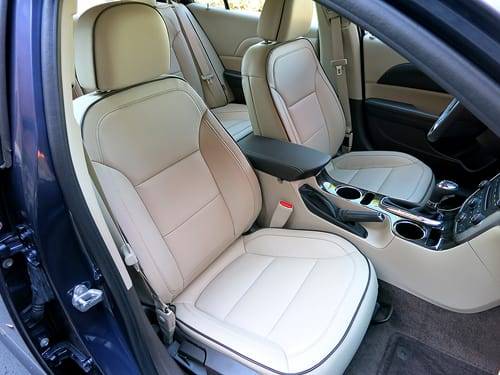
The other big interior change comes up front, where Chevrolet has redone the center console to provide a larger armrest along with cupholders and cellphone slots between the front seats. All of this resides below a black plastic control panel in which no fewer than 40 buttons, knobs and switches reside. If you’re looking for where all the buttons went when Buick simplified its center consoles for 2014, the answer is Chevrolet. Still, it’s a more satisfying layout than Ford’s touch-sensitive plastic console in the Fusion.
But the Malibu has a trick up its sleeve that may help you ignore all those buttons: Siri, the electronic concierge built into every new Apple iPhone, is now available to you through the Malibu’s steering wheel controls (provided you have an iPhone with Siri enabled, paired to the car via Bluetooth link). Just push a button to activate Siri, just like you would on your iPhone, and give commands as you would. A new text-to-speech function will also read your text messages aloud, and allow you to reply via a quick preset message on the touch-screen display.
From a powertrain standpoint, Malibu now comes in just two variants. Standard is a 2.5-liter four-cylinder engine making 196 horsepower and 186 pounds-feet of torque, healthy numbers when compared to Malibu’s competitors. Power is sent to the wheels by an updated new six-speed automatic transmission, which debuts on the 2014 Malibu. The optional powertrain is a 2.0-liter turbocharged four-cylinder engine making 259 hp and an attention-grabbing 295 pound-feet of torque, more torque than any of Malibu’s competitors, including V-6 models. The e-Assist mild hybrid system has been discontinued on the Malibu, replaced by a much less expensive engine stop-start system that is now standard equipment on the 2.5-liter engine.
The standard stop-start system kills the engine when the car is brought to a stop, say at a traffic light or stop sign. In city traffic, where stops are frequent, the system has resulted in a 14 percent improvement in fuel economy for the Malibu, which is now rated at 25/36/29 mpg city/highway/combined. The system cannot be switched off, but its operation is so well integrated that there really isn’t much need to. It only operates when the transmission is in Drive and the driver’s foot is on the brake. Lift off the brake, or shift into Park, or start the car and let it idle and the engine will run as normal. In stop-and-go traffic if speeds never go above 6 mph, the system will not kill the engine. These rather conservative restrictions make the system inoffensive, and the smooth engine cutoff and restart are barely perceptible. It’s one of the better executions of a stop-start system that I have encountered, and I found that I really didn’t mind that there wasn’t a way to turn it off.
Around town, the 2.5-liter engine proves to be more than adequate to motivate the new Malibu with ease, with the new six-speed transmission proving to be a willing and well-matched partner. Acceleration is brisk, and there’s more than enough passing power. The engine can be a little noisy under full throttle, but it isn’t raucous or disturbing by any means.
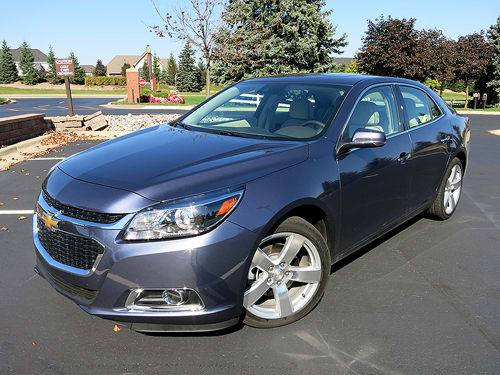
My personal choice, however, would be the 2.0-liter turbo motor, which transforms the Malibu into something of a secret sports sedan. Zero-to-60 mph happens in less than six seconds, meaning it could theoretically outrun our long-term Subaru BRZ sports coupe at a stoplight. Plant your foot in the turbo and you’ll believe those numbers too — the Malibu rockets forward and can actually chirp the tires from a standstill. That it does so with far less engine noise than the base engine, with little more than a hushed whoosh, is even more impressive.
Handling has been improved for 2014 as well, with the Malibu receiving some updates to suspension equipment and electronic steering controls. The result is a nicely controlled, tight-steering sedan that doesn’t embarrass itself on twisty roads or broken pavement. Road and wind noise is impressively hushed, making for easy conversations in the Malibu at highway speeds. Brake feel may be improved, but it still isn’t all that good, with all three models I drove exhibiting longer than expected travel before brakes engaged. They may be strong, but they don’t feel terribly firm.
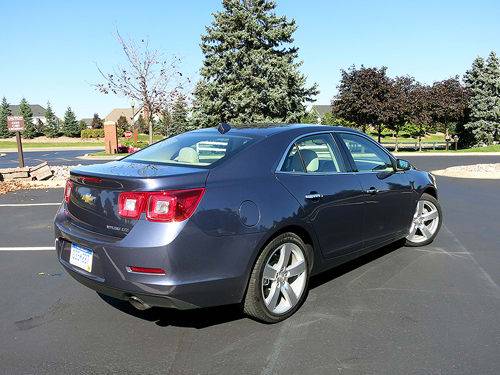
Overall, the updates to the Malibu for 2014 make it an entertaining car to drive with electronics that work well. The Malibu is a more competitive car than last year’s model, and tops its competitors with the base engine’s power and fuel economy. Pricing is in line with the market as well, with the 2.5-liter starting at just about $23,000 and coming well-equipped for less than $30,000, while the loaded turbo model I sampled clocked in just less than $34,000. The 2014 Malibu is on sale now.
Related
2014 Chevrolet Malibu: First Look
2013 Chevrolet Malibu at the 2011 New York Auto Show
Research the 2014 Chevrolet Malibu on Cars.com

Detroit Bureau Chief Aaron Bragman has had over 25 years of experience in the auto industry as a journalist, analyst, purchasing agent and program manager. Bragman grew up around his father’s classic Triumph sports cars (which were all sold and gone when he turned 16, much to his frustration) and comes from a Detroit family where cars put food on tables as much as smiles on faces. Today, he’s a member of the Automotive Press Association and the Midwest Automotive Media Association. His pronouns are he/him, but his adjectives are fat/sassy.
Featured stories
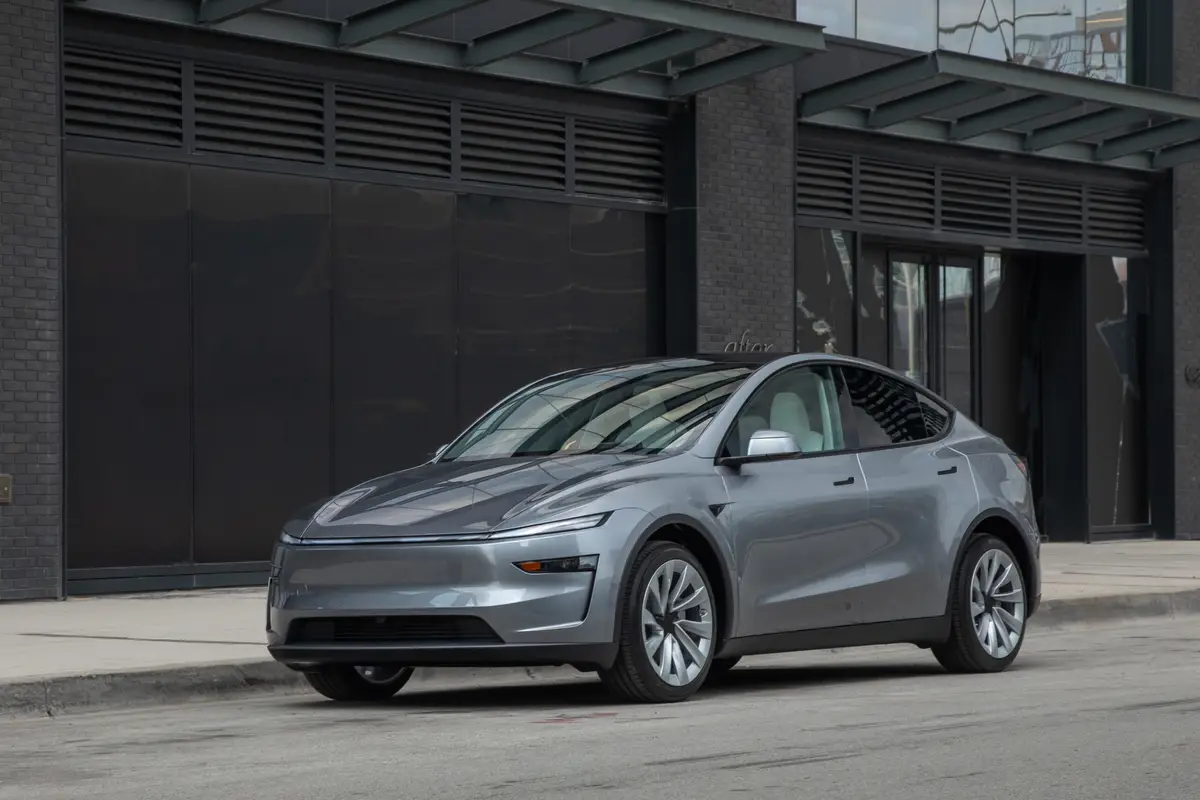
Should Tesla Model Y Owners Get the New 2026?

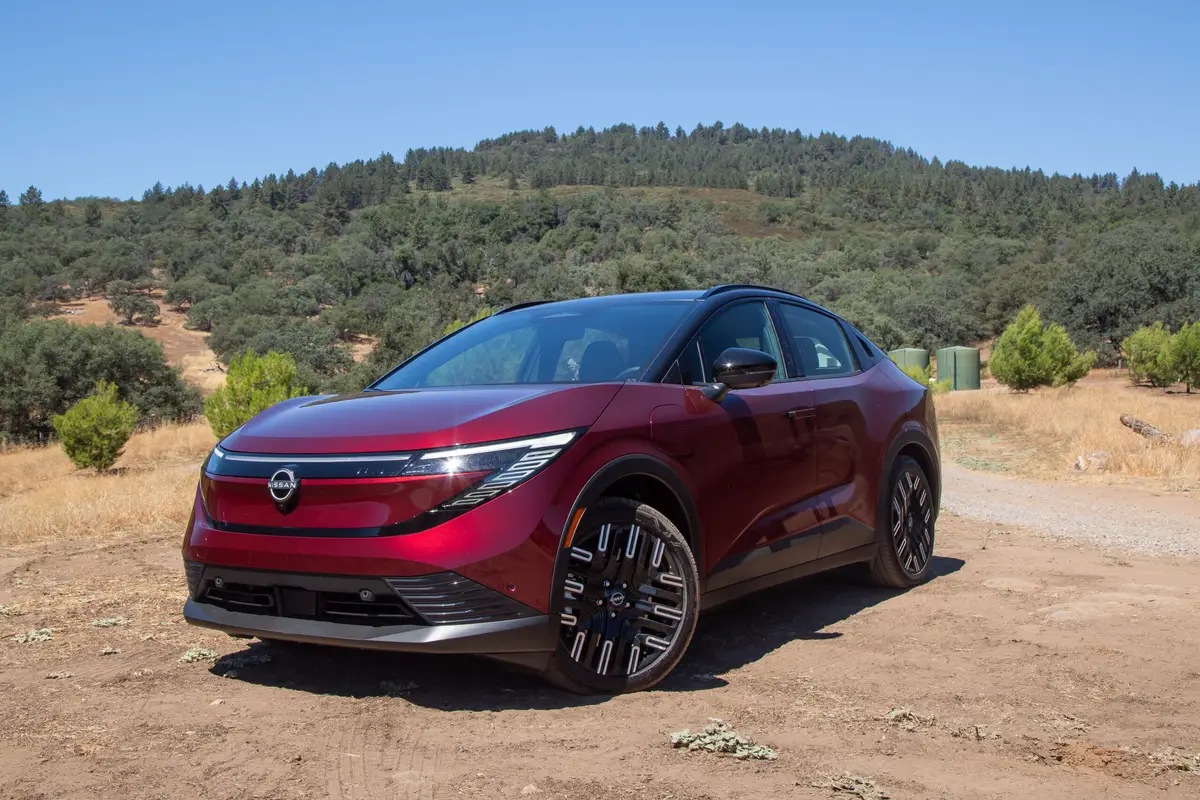
2026 Nissan Leaf Review: Value Victory


